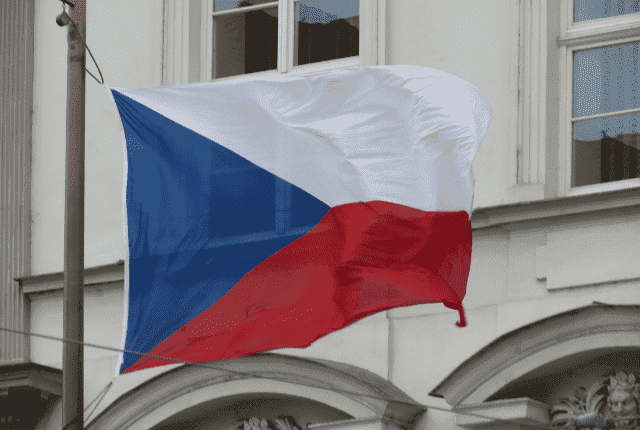Cuprins Arată
The Imnul național ceh, "Kde domov můj" (care se traduce prin "Unde este casa mea" în engleză), a fost compusă de František Škroup și scris de Josef Kajetán Tyl. Kde domov můj este o piesă muzicală semnificativă din punct de vedere istoric, care a definit identitatea cehă timp de generații. Acest articol va analiza istoria și semnificația acestui imn îndrăgit.
The Imnul național ceh a fost prezentat pentru prima dată în opera "Fidlovačka" în 1834. Inițial destinată scenei, opera Imn ceh a atins o coardă sensibilă cu localnicii în timpul Renașterii Naționale Cehe, un efort de a păstra Limba cehă și cultură sub autoritatea austriacă.
Versurile Imnul național ceh să exalte frumusețea țării și să inspire un sentiment profund de mândrie națională. "Kde domov můj" a fost folosit ca Imnul național al Republicii Cehe în 1918 și a devenit singurul imn al Republicii Cehe după separarea sa de Slovacia în 1993. El continuă să reprezinte și astăzi unitatea, mândria și devotamentul poporului ceh față de patrie.
Introducere la imnul național ceh
Astăzi, "Kde domov můj" rămâne un simbol iubit al identității naționale cehe. Melodia sa liniștitoare și cuvintele simple stârnesc sentimente de mândrie și nostalgie față de patrie, făcând din ea o parte esențială a evenimentelor naționale și internaționale.
Semnificația imnului provine nu numai din statutul său de emblemă națională, ci și din descrierea legăturii permanente a poporului ceh cu patria, cultura și istoria sa. Cântecul național al Republicii Cehe "Kde domov můj" îndeplinește mai multe funcții vitale, printre care:
Un simbol al identității naționale
Cântecul subliniază legătura poporului ceh cu țara natală și istoria culturală, promovând mândria națională.
Semnificație istorică
Scrisă în timpul renașterii naționale cehe din 1834, ea a contribuit la păstrarea limbii și culturii cehe în timpul Controlul austriac, însemnând rezistență și solidaritate.
Reprezentarea naturii
Versurile sale subliniază frumusețea terenului ceh, reflectând aprecierea țării pentru natură.
Moștenire culturală
Acesta a fost inclus pentru prima dată în Imnul Republicii Cehe în 1918 și a rămas cântecul țării și după independența sa pașnică față de Slovacia, în 1993.
Roluri patriotice în cadrul evenimentelor naționale
Imnul este interpretat la evenimente oficiale, turnee sportive și reuniuni diplomatice pentru a dezvolta un sentiment de solidaritate și patriotism.
Emblemă reprezentând pacea și stabilitatea
Tonul său liniștit și introspectiv îl diferențiază de imnurile mai militante, reprezentând preferința Republicii Cehe pentru pace și mândrie culturală în detrimentul agresivității.
Istoria imnului național al Republicii Cehe
"Kde domov můj" ("Unde este casa mea") provine din piesa cehă "Fidlovačka", scrisă de Josef Kajetán Tyl și compusă de František Škroup. Cântecul a fost încorporat în partitura muzicală a piesei, care a fost jucată pe 21 decembrie 1848.
În "Fidlovačka", o tânără cehă interpretează un cântec despre tristețe și dorul de țara natală. Cuvintele și muzica sa emoționante au încapsulat spiritul naționalismului ceh și au rezonat cu publicul. Deși "Fidlovačka" nu a fost un succes teatral extraordinar, cântecul "Kde domov můj" a câștigat faimă și a devenit o emblemă îndrăgită a identității naționale cehe.
Cântecul a crescut în popularitate și a simbolizat identitatea și mândria cehă. În 1920, Cehoslovacia a adoptat oficial "Kde domov můj" drept cântec național. Conținutul viu și patriotic al cântecului a rămas sinonim cu sentimentele naționale cehe și după divizarea Cehoslovaciei în Republica Cehă și Slovacia în 1993. Acesta continuă să fie o emblemă fundamentală a mândriei și identității naționale cehe.
Versuri și semnificația melodiei "Kde domov můj"
Celebru poet ceh Josef Kajetán Tyl a scris cuvintele care simbolizează speranțele, luptele și dragostea poporului ceh pentru țara sa.
The cuvintele lui Kde domov můj reflectă dorul de o patrie și o legătură emoțională cu aceasta. Întrebarea principală, "Unde este casa mea?", exprimă dorința umană de apartenență și confort. Reprezentarea pământului ceh, inclusiv câmpurile, munții și râurile, subliniază frumusețea naturală a țării și peisajul pitoresc.
The Versurile imnului național ceh descriu, de asemenea, în mod viu mediul natural ceh, punând accentul pe farmecul său fizic, precum și pe valoarea sa emoțională și culturală.
În plus, accentul pus de cântec pe țara natală ca sursă de calm și frumusețe încurajează sentimentele de mândrie și unitate națională. "Kde domov můj" este un simbol cultural al patrimoniului ceh care subliniază rolul pământului în stabilirea identității culturale și personale.
Imnul național ceh în vremurile moderne
The Imnul național ceh este o parte importantă a sărbătorilor naționale, fiind o reprezentare puternică a identității și unității cehe. În timpul evenimentelor-cheie, precum Ziua Independenței, Ziua Republicii și diverse alte sărbători naționale, imnul național insuflă mândrie și patriotism populației cehe. El acționează ca un factor de unificare, reunind oameni de toate originile și ideile în jurul unei identități naționale comune.
Ritualurile elaborate și adunările publice în care Imnul ceh este cântat demonstrează importanța sa în cadrul sărbătorilor naționale. Fie că este cântat de un cor, interpretat de o orchestră simfonică sau pur și simplu difuzat prin difuzoare, imnul național este un puternic memento al trecutului, provocărilor și succeselor țării. Este un moment care unește întreaga țară, permițându-le cehilor să reflecteze asupra valorilor și obiectivelor lor comune.
Prin urmare, imnul Republicii Cehe este extrem de importantă în cadrul festivalurilor naționale, servind drept forță unificatoare și insuflând un sentiment de mândrie comunitară în rândul poporului său.
- Simbol al naționalității și unității cehe.
- Invocă mândrie și patriotism.
- Unifică oameni din medii diferite.
- Vă amintește de istorie, dificultăți și succese.
- Reflectă valori și ambiții comune.





